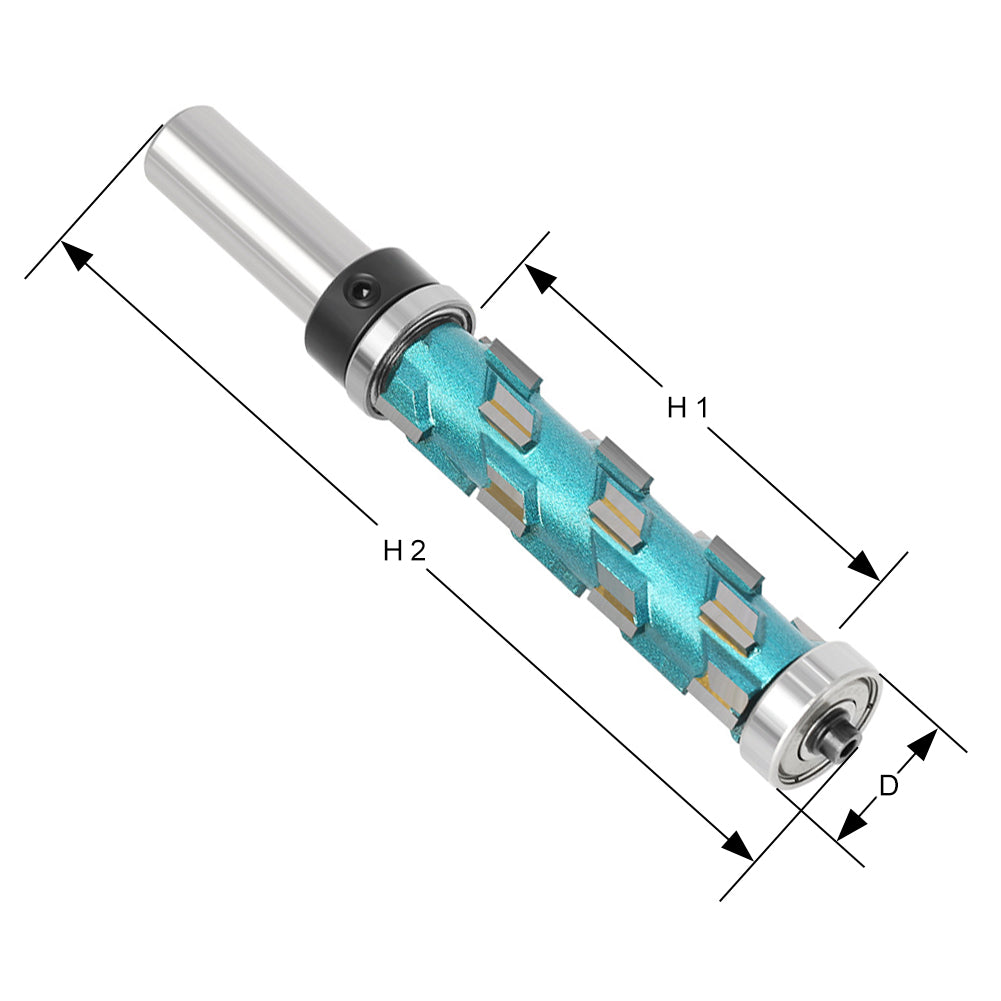What is the difference between a flush trim router bit and a straight bit
A flush trim router bit
and a straight bit are two distinct types of router bits that serve different purposes in woodworking. Here are the key differences between the two:
Flush Trim Router Bit:
A flush trim router bit is specifically designed to trim or "flush" the excess material from the surface of one workpiece to match the contour or shape of another workpiece. It is commonly used to achieve precise and smooth edges, create duplicates, or trim laminates, veneers, or template patterns. The key features of a flush trim router bit include:
1. Cutting Edge: A flush trim bit typically has a cutting edge with a bearing at the tip. The bearing acts as a guide, following the outline of the template or the previously cut piece while the cutting edge removes the excess material.
2. Bearing Placement: The bearing of a flush trim bit is positioned at the top or bottom of the bit, allowing it to ride along the edge of the template or workpiece being trimmed. This ensures that the cutting edge precisely follows the shape, resulting in a flush, uniform cut.
3. Variable Length: Flush trim bits are available in various lengths, allowing you to choose a bit that matches the thickness of the workpiece and the desired depth of cut.

Straight Bit:
A straight bit, as the name suggests, has a cutting edge that runs straight along the axis of the bit. It is a versatile router bit commonly used for general-purpose cutting, grooving, dadoing, or edge profiling. The key features of a straight bit include:
1. Cutting Edge: A straight bit has a straight cutting edge without any bearing. The cutting edge extends from the tip to the base of the bit, allowing it to cut straight, flat-bottomed channels or grooves.
2. Diameter and Length: Straight bits come in various diameters and lengths, enabling you to choose the appropriate size for your specific cutting needs.
3. Versatility: Straight bits are highly versatile and can be used for a wide range of applications, including making dado cuts, creating rabbets, routing channels, or shaping edges. They are often used with a router fence or guide for precise and straight cuts.
In summary, a flush trim bit
is primarily used for trimming or duplicating the shape of one workpiece to match another, while a straight bit is a general-purpose bit used for various cutting, grooving, or edge profiling tasks. The presence of a bearing and the specific design of a flush trim bit make it ideal for achieving flush and accurate cuts along the edge of a template or workpiece. On the other hand, a straight bit offers versatility and is commonly used for straight cuts and shaping operations.
|